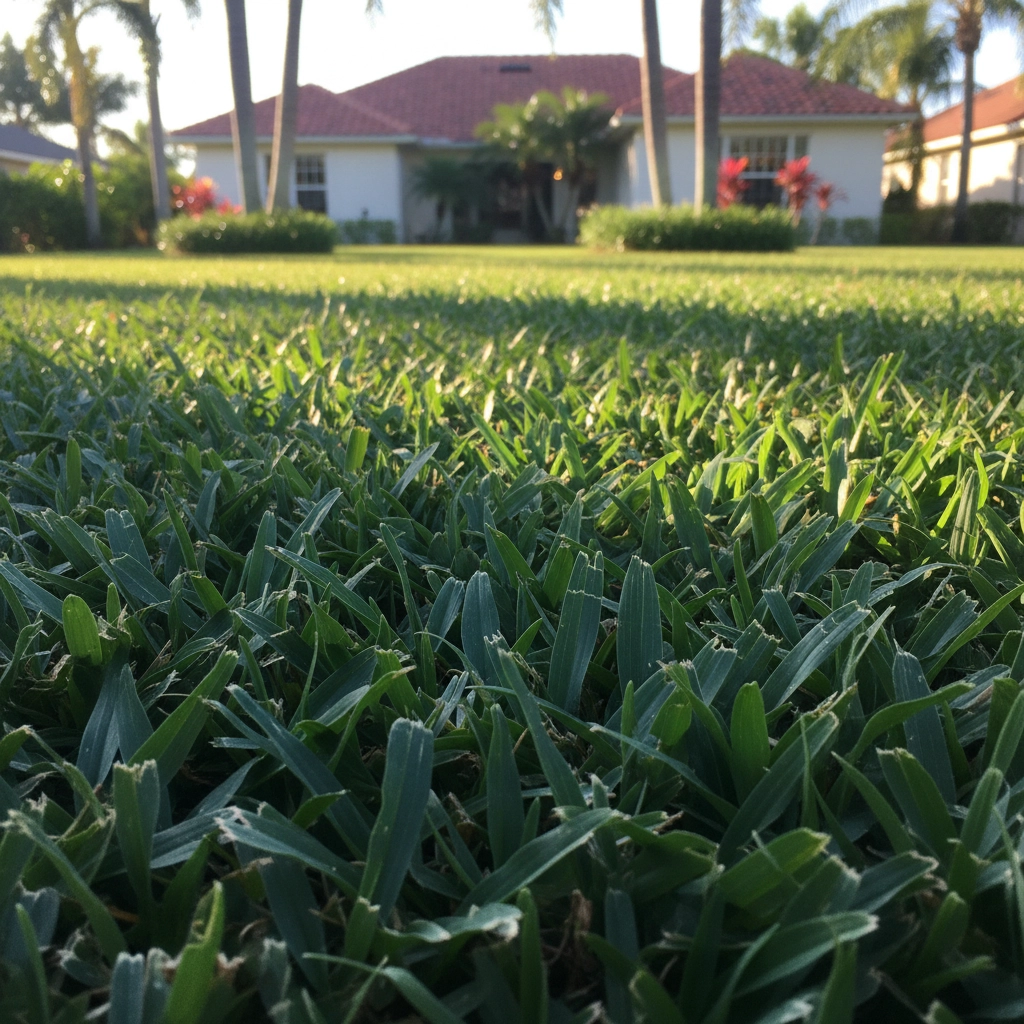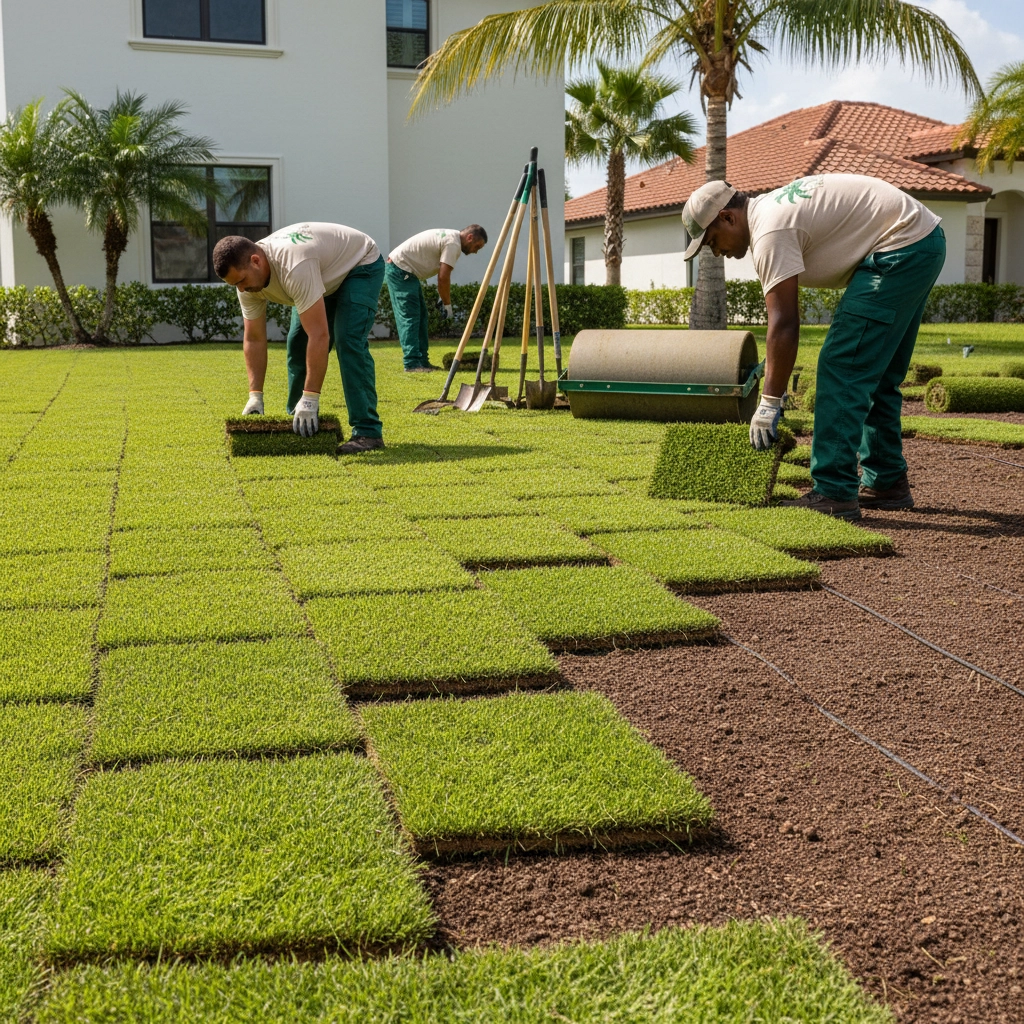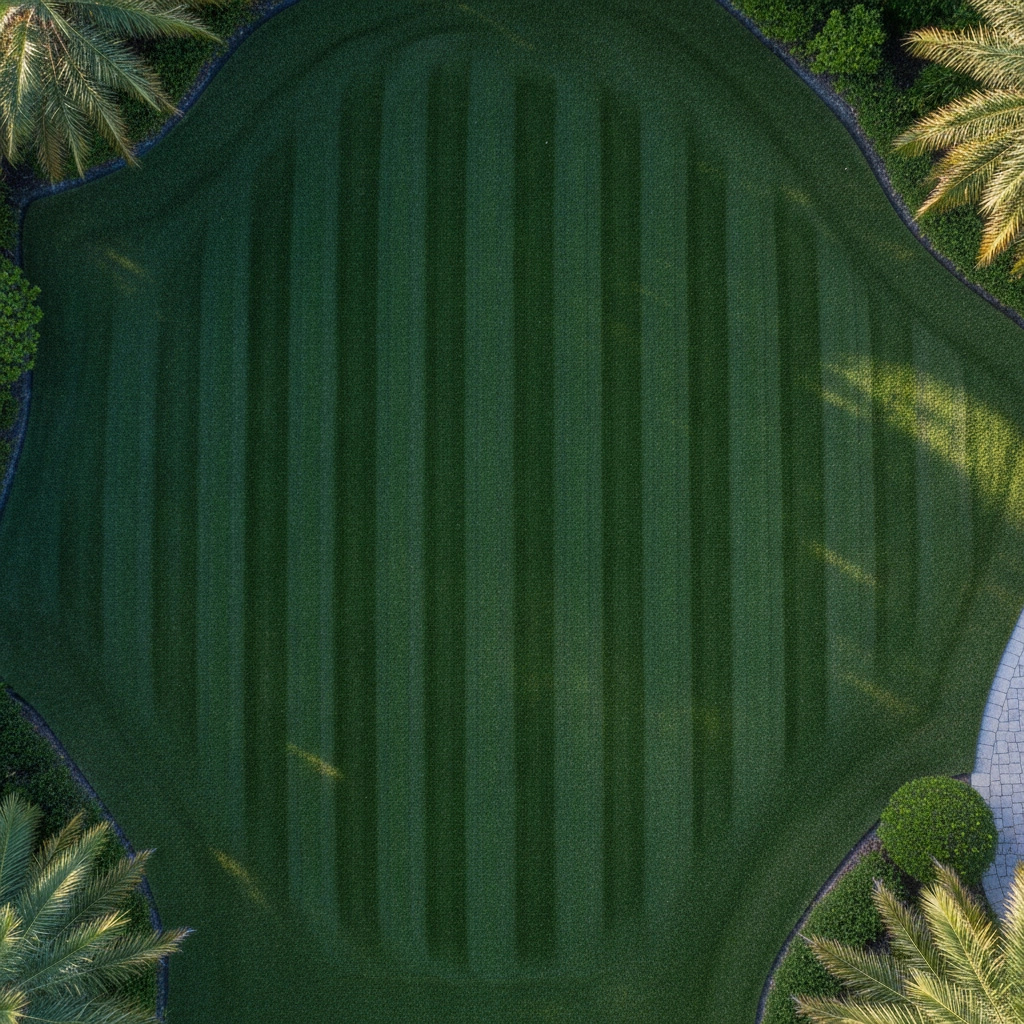St. Augustine Grass in Florida: The Ultimate Homeowner's Guide
- admin838846
- Oct 18
- 4 min read
When it comes to landscaping Florida homes, St. Augustine grass stands as the gold standard for homeowners seeking a lush, vibrant lawn that can handle the Sunshine State's unique climate challenges. This premium turfgrass has earned its reputation as Florida's most popular choice, and for good reason: it delivers the thick, carpet-like lawn that transforms ordinary yards into stunning outdoor sanctuaries.
Why St. Augustine Grass Dominates Florida Landscapes
St. Augustine grass thrives in Florida's warm, humid environment like no other turfgrass variety. Its broad, coarse blades create that distinctive blue-green color that's become synonymous with premium backyard landscaping Florida projects. Unlike many other grass types, St. Augustine tolerates shade exceptionally well, making it perfect for yards with mature trees or structures that create partial shade throughout the day.
The grass spreads through above-ground stolons, or runners, creating a dense growth pattern that naturally crowds out weeds and creates that luxurious, cushiony feel underfoot. This aggressive growth habit means your lawn can recover quickly from wear and tear, maintaining its pristine appearance season after season.

Key Characteristics That Set St. Augustine Apart
Superior Shade Tolerance: While most warm-season grasses struggle in shaded areas, St. Augustine maintains its density and color even with limited sunlight exposure. This makes it ideal for landscape design Florida projects where preserving mature trees is a priority.
Heat and Humidity Resistance: Florida's intense summer heat and high humidity levels don't phase this resilient grass. It continues growing vigorously when other varieties begin to stress and thin out.
Dense Growth Pattern: The thick growth creates a natural weed barrier while providing that premium lawn appearance that enhances property values and curb appeal.
Moderate Drought Tolerance: Once established, St. Augustine grass can withstand brief dry periods, though consistent moisture produces the best results.
Professional Installation Methods
Since St. Augustine grass doesn't produce viable seeds, we establish lawns using three proven methods: sod, sprigs, or plugs. At Quality Outdoors, we typically recommend sod installation for homeowners who want immediate results and instant coverage.
Sod Installation Excellence
Our sod installation process begins with meticulous site preparation. We remove all existing vegetation, grade the soil for proper drainage, and test pH levels to ensure optimal growing conditions. The soil should fall between 5.0 and 7.5 pH for best results.
We install sod pieces in a staggered brick pattern, pressing edges tightly together to prevent gaps that invite weed invasion. After laying each section, we use professional-grade lawn rollers to ensure perfect contact between the sod and underlying soil: this crucial step determines long-term success.

Your Year-Round Maintenance Calendar
Spring Awakening (March-May) As temperatures warm and your St. Augustine emerges from winter dormancy, begin watering two to three times weekly. Apply a pre-emergent herbicide to prevent weed germination, and start your fertilization schedule with a balanced, St. Augustine-safe formula. Leave grass clippings on the lawn: they decompose naturally and provide organic nutrition.
Summer Peak Performance (June-August) During Florida's intense summer months, increase watering to two to four times weekly, adjusting based on your soil type and rainfall. Sandy soils require more frequent watering than denser clay soils. Apply nitrogen-rich fertilizer in early summer, followed by balanced nutrition in mid-summer. Always water in early morning to minimize evaporation and prevent fungal issues.
Fall Preparation (September-November) Transition your lawn toward dormancy with slow-release fertilizer in early fall. Stop fertilizing by late September to prevent tender growth vulnerable to temperature drops. Reduce watering frequency to one to two times weekly and mow only as needed as growth slows.
Winter Dormancy Management (December-February) In most Florida locations, St. Augustine enters dormancy when soil temperatures drop below 68°F. During this period, minimize intervention: reduce fertilization and adjust watering based on natural rainfall patterns.
Optimal Watering and Mowing Practices
Deep, Infrequent Watering We recommend watering deeply and less frequently to encourage robust root development. Provide 1 to 1.5 inches of water weekly through irrigation and rainfall combined. This approach creates drought-resistant roots and healthier overall turf.
Proper Mowing Height Maintain your St. Augustine lawn between 2.5 and 4 inches high. This height promotes moisture retention, strong root development, and creates dense turf that resists weed invasion. During peak growing season, weekly mowing keeps your lawn looking professionally maintained.

Common Challenges and Professional Solutions
Weed Management Apply pre-emergent herbicides in early spring to prevent weed seeds from germinating. For existing weeds, use post-emergent herbicides specifically labeled as safe for St. Augustine grass. Some formulations can damage this turfgrass, so professional expertise ensures proper product selection.
Fungal Issues Florida's humidity can promote fungal growth. Prevent problems by watering in early morning, ensuring proper air circulation, and avoiding over-fertilization during humid periods.
Pest Control Chinch bugs and grubs occasionally target St. Augustine grass. Regular monitoring and prompt treatment prevent minor issues from becoming major problems.
How St. Augustine Compares to Other Turf Options
Versus Bermuda Grass: St. Augustine tolerates shade far better than Bermuda, though Bermuda handles heavy foot traffic more effectively.
Versus Zoysia: Both grasses create dense, attractive lawns, but St. Augustine establishes faster and tolerates Florida's humidity better.
Versus Bahia: St. Augustine requires more maintenance than low-maintenance Bahia but provides significantly superior appearance and feel.
For landscaping companies Florida homeowners trust, the choice often comes down to St. Augustine for its combination of beauty, durability, and climate suitability.
Temperature and Timing Considerations
Avoid fertilizing when temperatures drop below 55°F, as this can stimulate growth when the grass should remain dormant, making it vulnerable to cold damage. Focus fertilization efforts during active growing seasons when the grass can effectively utilize applied nutrients.
The best time for installation spans the entire growing season, though spring installation allows maximum establishment time before summer heat stress.
Professional Results You Can Count On
Creating and maintaining the perfect St. Augustine lawn requires expertise, quality materials, and ongoing commitment to excellence. At Quality Outdoors, we bring decades of experience in St. Augustine grass Florida installation and maintenance. Our comprehensive approach ensures your investment delivers lasting beauty and value.
From initial soil preparation through ongoing seasonal care programs, we handle every detail with precision and pride. Our team understands the nuances of Florida's diverse microclimates and soil conditions, tailoring our approach to your property's unique characteristics.
Ready to transform your outdoor space with a premium St. Augustine lawn that enhances your property value and creates the perfect foundation for your landscape design dreams? Contact Quality Outdoors today for a consultation. We'll assess your property, discuss your vision, and create a customized plan that delivers the lush, professional results you deserve.
Your dream lawn awaits( let's bring it to life together.)

Comments